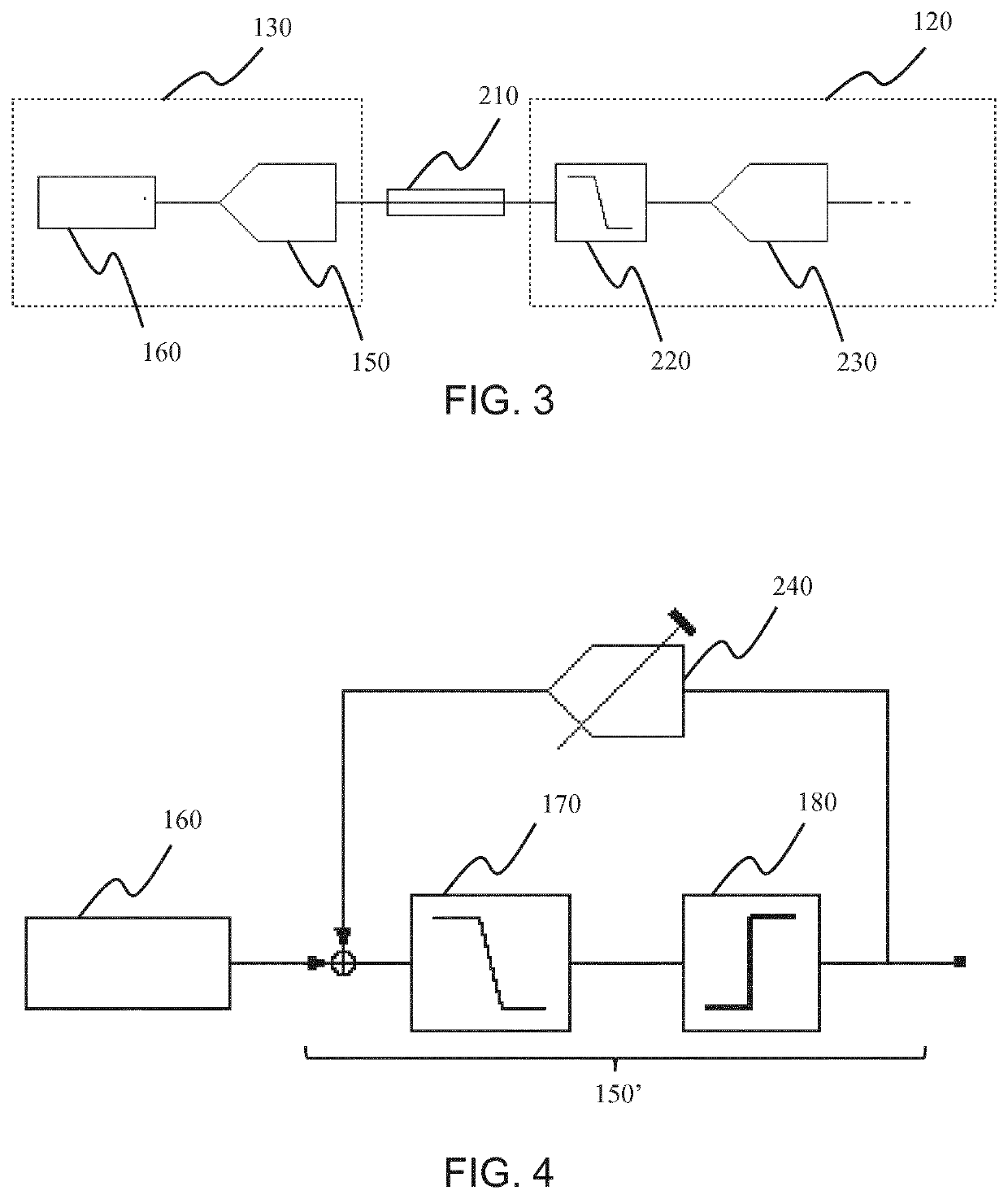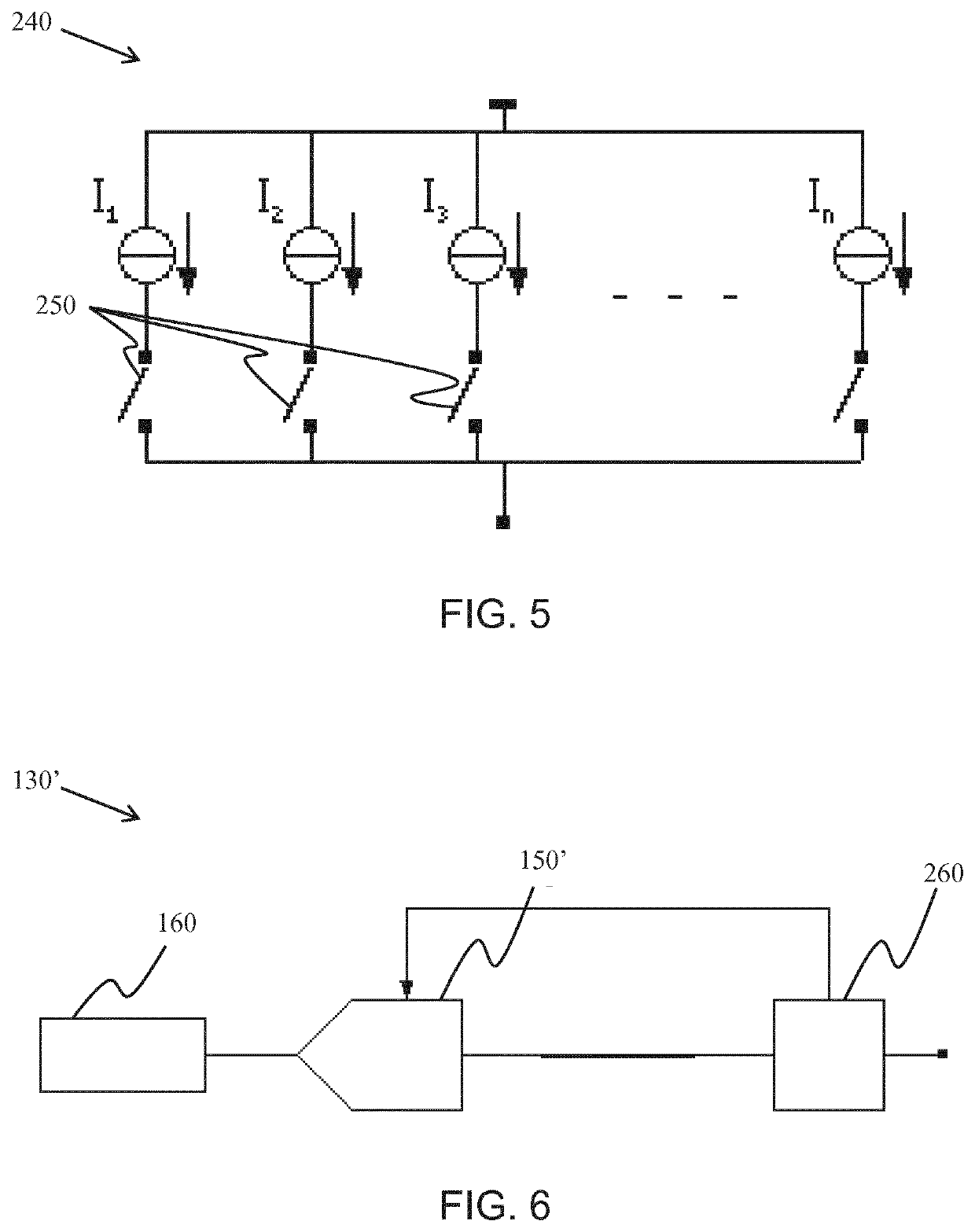Systems and methods for performing analog-to-digital conversion across multiple, spatially separated stages
- Summary
- Abstract
- Description
- Claims
- Application Information
AI Technical Summary
Benefits of technology
Problems solved by technology
Method used
Image
Examples
Embodiment Construction
[0237]In a first aspect, there is provided a signal processing system, for transferring analog signals from a probe to a remote processing unit. The system comprises a first ASIC at a probe, which is adapted to receive an analog probe signal. The first ASIC comprises an asynchronous sigma-delta modulator, wherein the asynchronous sigma-delta modulator is adapted to: receive the analog probe signal; and output a binary bit-stream. The system further comprises a second ASIC at the remote processing unit, adapted to receive the binary bit-stream.
[0238]FIG. 1 shows a schematic of the signal processing system 100. The signal processing system comprises a first ASIC 110 and a second ASIC 120, with the first ASIC located on a probe 130 and the second ASIC located on a remote processing unit.
[0239]In the example shown in FIG. 1, the signal processing system forms part of an ultrasound system, wherein the probe 130, housing the first ASIC 110, further includes an acoustic transducer array 14...
PUM
 Login to View More
Login to View More Abstract
Description
Claims
Application Information
 Login to View More
Login to View More - R&D
- Intellectual Property
- Life Sciences
- Materials
- Tech Scout
- Unparalleled Data Quality
- Higher Quality Content
- 60% Fewer Hallucinations
Browse by: Latest US Patents, China's latest patents, Technical Efficacy Thesaurus, Application Domain, Technology Topic, Popular Technical Reports.
© 2025 PatSnap. All rights reserved.Legal|Privacy policy|Modern Slavery Act Transparency Statement|Sitemap|About US| Contact US: help@patsnap.com



